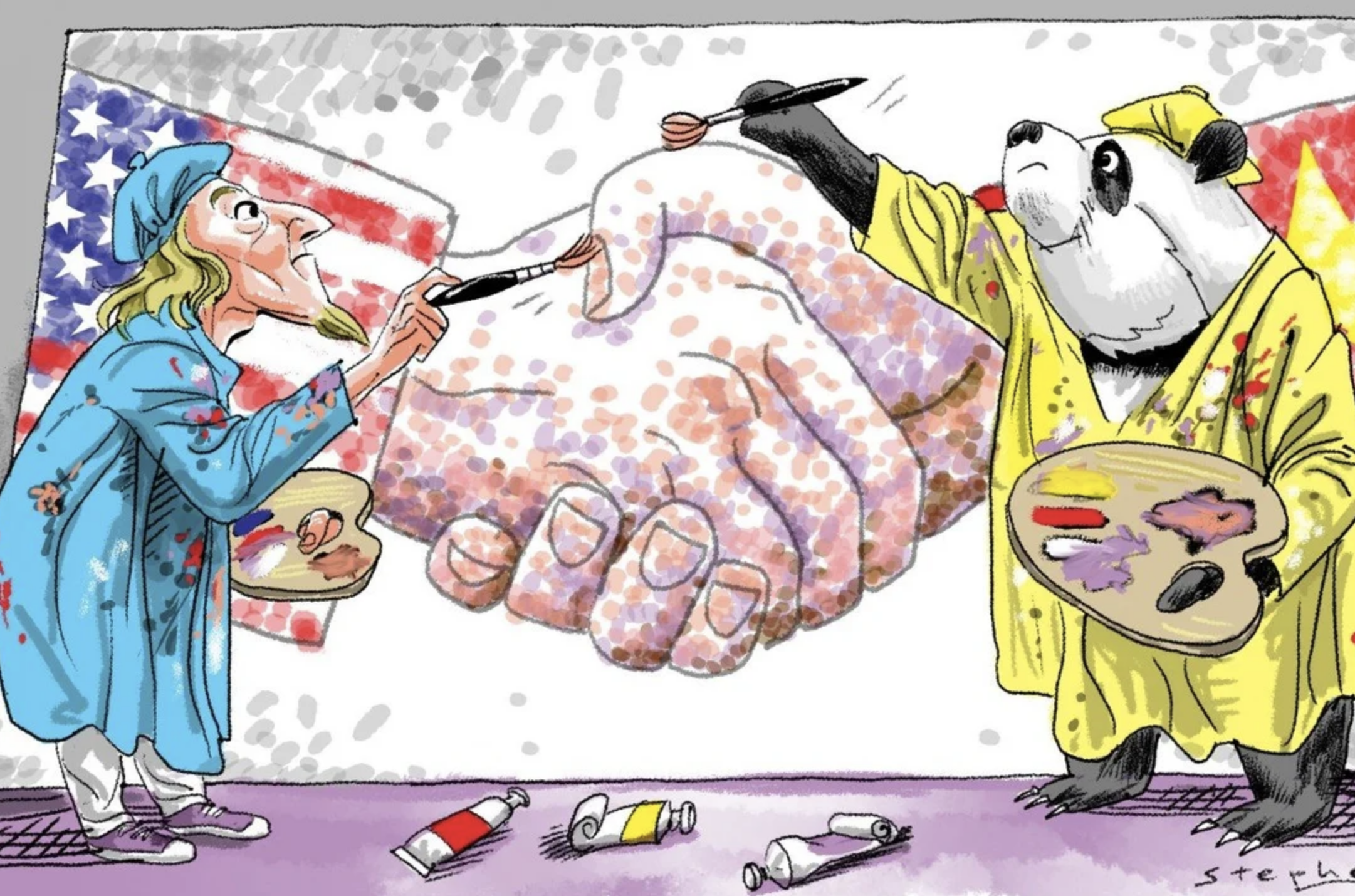TOM PLATE WRITES — The late George Kennan became a diplomatic legend for advocating, while stationed in Moscow, a singular foreign policy idea that famously worked. It was called “containment”. Its steadfast observance by the US and its allies undoubtedly helped lead to the welcome collapse of the Soviet Union.
So, now, for China too – containment anew? No: to the end of his years at Princeton, this deep thinker came to warn against simple slogans or faulty formulations that would never work for the complex and dynamic world in which we live today. In the face of China, the guru of perhaps the most famous strategic phrase in modern US diplomatic history pointedly shied away from grand designs of any sort.
If honest intellectual humility in trying to size up the world was good enough for Kennan, the new Biden foreign-policy team might try it on for size. My concern with some of the new National Security and State Department appointments, especially in the nerve-jangling Korean peninsula policy portfolio, is that bookish competence is too blithely conflated with true knowledge, and long experience with automatic sagacity.
The best advice for US President Joe Biden is to make sure he thinks things out for himself. The blunders of John F. Kennedy (Bay of Pigs), Lyndon B. Johnson (Vietnam) and George W. Bush (Iraq) were made because of, not despite, advice from the so-called best and brightest.
For Beijing’s part, perhaps a wise Kennan-esque retreat into reality might incline the action-prone Xi Jinping government towards more Confucian self-reflection. China is now perched on a high economic plateau, but can the government take it to the next level, or will the weight of all its accumulated debt knock it off its high horse?
The US foreign policy establishment tends to view China with narrow American eyes, through an ego-scope. That will yield mainly myopia.
China has many other two-way “telescopes” poking into its space: giant India, emerging Indonesia, and too-close-for-comfort Japan – not to mention the more than a dozen nations on its border, including Russia. Far from everything that China thinks, does or even dreams exists solely in reaction to what the US thinks, does or dreams.
For those of us who cannot imagine a stable world order without more practical positivism in the Sino-US face-off, to fill the foreign-policy, post-Soviet hate vacuum with a new villain is no prescription for peace.
Yes, Russia’s Vladimir Putin can probably fit the bill for now. But if the need grows, or Putin folds, America, sitting atop a monstrous military complex, has China next in line. Should both Pacific powers remain frozen in stereotype, high-level diplomacy may yield next to nothing, or worse.
New friction is created when summits go south. Top-to-top talks are not foolproof: they greatly depend on who‘s at the top. Xi is different from Jiang Zemin, who in the late 1990s traded visits with Bill Clinton, who for his part was in top form during the 1998 return visit to China.
While the personality factor can be overrated, it is far from nothing. Spirited global-style leadership can foster a cumulative momentum for moderation.
Young people on both ends of the Pacific Ocean will tend to embrace the notion of “global citizenship” in ways elders will not understand. They have a common obsession: the ongoing climate-deterioration catastrophe. Too many “adult” leaders don’t quite seem to get it, despite all the official verbiage.
One vague hypothesis swirling around is that, somehow, Beijing and Washington might be able to agree to get cooking on this overwhelming issue – even if they cannot get it together on almost anything else.
But the very same correlation of domestic pressure groups that limit other breakthroughs on both sides create foul political weather for transformative climate action as well. For example, it’s hard to imagine either Biden or Xi risking further unemployment as the poisonous pandemic continues to bug economies.
What’s more doable right now, on both sides, is to launch countless small, targeted educational, cultural and scientific missions and obviously beneficial projects. (America should not worry about technology theft; before long, the US will want to steal from China!) Keep the energy level of bilateral dynamism high. Let points of contact traverse the Pacific. Have enough of them and they will coalesce into a momentum for peace.
Instead of fearing the downside of such contacts (Confucian Institutes as spy nests, etc), imagine how all of us – scientists, professors, health leaders, concerned citizens, deeply worried students, even columnists – can help breed trans-Pacific peace. We cannot leave this to our governments. Xi and Biden might just let it be.
The French of course had a word for the artistry of Georges Seurat, the 19th-century French master, that offers a useful analogy. Pointedly abjuring broad strokes or massive globs of paint, Seurat graced his canvas with careful touches of countless tiny dots of paint to seduce the eye into seeing a focused tableau of an otherwise nearly classic scene – A Sunday on La Grande Jette, for instance.
An analogous technique of pointillism should be considered to ease Sino-US tension: a thousand points of policy colour, dots of determined cooperation that, when in sufficient abundance and density, fill the eyes of the world with the sense of a sprawling canvas of peaceful cooperation. This is not fanciful but doable. In fact, for the time being, it is perhaps the only thing that we can do: a plethora of policy pointillisms.
Loyola Marymount University professor Tom Plate is also vice-president of the Pacific Century Institute

